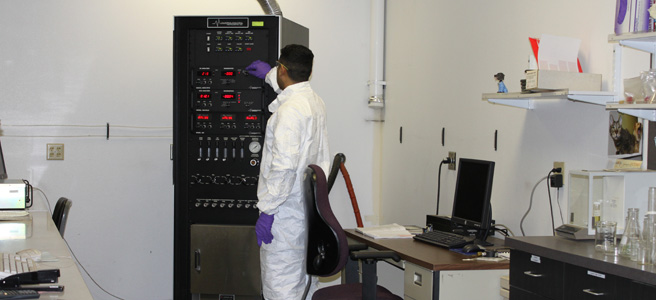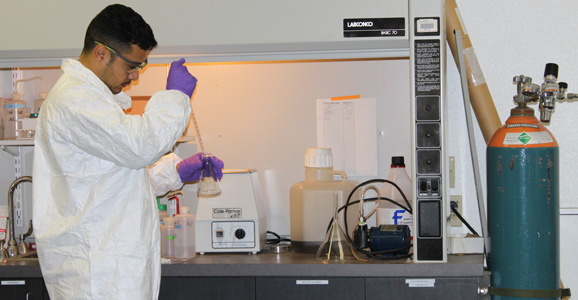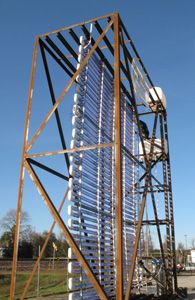As the use of biomass for the production of clean energy, cleaner-burning fuels and non-toxic chemicals has grown, so too has California’s role in the biomass industry.

One of the highlights of the inaugural Pacific West Biomass Conference & Expo is a tour of Sacramento Area facilities putting biomass technology to work. Photo courtesy Technikon, LLC
By Bill Picture
Published: January, 2010
The Golden State is such a big player, in fact, that the organizers of the International Biomass Conference & Expo are hosting a smaller, regional conference in Sacramento this month (January 11-13), with content geared specifically toward biomass production and utilization in California and several other western states—Oregon, Washington, Nevada and Idaho.
“Over a thousand people showed up to the international show last year in Oregon, and we found out that almost half of those people had come from within a 100-mile radius,” explains Tom Bryan, Vice President of Content for BBI International, host of the Pacific West Biomass Conference & Expo. “Based on that, along with the fact that, historically, California has been a leader in biomass-derived electricity, we determined there was a need for a regional show, to bring a more localized perspective to the biomass issue.”
What is biomass?
Biomass is any renewable raw material that can be used for the production of power, biofuels or a range of bio-based products, including environmentally friendly plastics. Those raw materials include waste from agricultural and industrial sources, including plant material and livestock waste, solid organic materials recovered from municipal sewage treatment and garbage and recycling facilities, and crops grown specifically for biomass production, such as corn and soybeans. In California, for instance, waste from rice fields that was once burned, including hulls, is now utilized in a variety of ways. California is the second largest rice-producing state in the country.
The goals of the Pacific West Biomass Conference are many, according to Bryan. First on the list is helping those businesses that are putting biomass materials to good use locate potential sources of feedstock. “What we refer to as the ‘biomass industry’ is really several different industries utilizing the same feedstocks, so there’s a lot of competition,” says Bryan. “Even within those sub-industries, there’s a competitive nature. The resources are finite, so they have to be managed well.”
Finding ways to feed the growing demand for biomass materials, along with establishing sustainable means of collection, storage and transport, are among the topics being addressed over the course of the three-day conference, which features more than a dozen panel discussions organized into three tracks: electricity generation, industrial process heat and power, and biorefining.
For those businesses considering getting into the biomass game, the conference also affords the opportunity to ask important questions and locate potential sources of funding. “Generating leads is important, but we also want to help build a knowledge base that will move the industry forward,” says Tim Ports, program manager for the conferences. “The industry is facing a number of major challenges right now that we intend to address. By bringing those issues front and center, and having some of the key players at the table, like the California Energy Commission, academics and elected officials, we hope to start a productive dialogue.”
Bumps ahead
“Now is a critical time,” says Bryan. “For instance, there are 33 biomass power plants in California, and many are in financial distress because key production incentives and support mechanisms, such as the federal tax credit for renewable electricity production, are expiring soon.”
“What also happens a lot is that the intended outcome of a newer piece of legislation conflicts with another piece of existing legislation, making it very challenging for folks who want to do business here,” adds Port. “They often run up against regulations that are cumbersome, if not altogether prohibitive.”
Irvine, California-based Blue Fire Ethanol, for instance, had planned to build several biorefineries in California, but eventually decided to build only one facility here after finding California’s stringent permitting process to be a nearly impassable roadblock. “And we’re hearing more and more of these stories about stumbling blocks,” says Bryan. “But instead of looking at them as problems, we want attendees to see them as possibilities.”
“I think we’ve done a good job of identifying the problems and creating a forum where participants can talk and basically hash it out, right there in front of our attendees,” adds Port. “That’s the first step toward arriving at some kind of a solution.”
Hope for the future
Challenges aside, Bryan and Port have much hope for the future of biomass. Though the political and financial infrastructures required for full-scale biomass utilization are experiencing modest setbacks and uncertainty, ingenuity continues forward at full-speed.
As evidence of recent advancements, Port points to anaerobic digestion, technology that can convert decomposing organic materials, such as the manure from San Joaquin Valley’s million-plus dairy cows, into usable clean energy. He also points to the growing of algae in laboratories to make biofuels. “California is leading the way in these areas,” he says.
On the last day of the conference, attendees can tour nearby facilities that are already successfully putting these and other seemingly sci-fi technologies to work. Among those facilities is the Sacramento Regional Wastewater Treatment Facility, where methane from sewage is being converted into clean electricity—enough to power 5,000 homes.
“This is a feedstock that every densely populated area has at its disposal,” Port explains. “It’s a perfect example of turning a problem into an opportunity.”
This month’s conference is the first of three regional conferences being scheduled this year, with the next International Biomass Conference & Expo taking place in Minneapolis in May. The content for each of the regional conferences will identify biomass sources, as well as the opportunities and challenges specific to that host region.
“Our events tend to be business-to-business, attendee-wise, but we also hope to draw in anyone with an interest in working within the industry,” says Bryan. “We want everyone to walk away from our events feeling like they’ve learned something and advanced themselves at least one or two steps from where they were before.”
Pacific West Biomass Conference & Expo
January 11-13, 2010 at the Hyatt Regency Sacramento, 1209 L Street, Sacramento. For more information, visit www.pacificwest.biomassconference.com

Technikon Advanced Technologies, one of three stops on the industry tour, is an independent plant and laboratory space dedicated to accelerating the commercialization of its clients’ renewable energy technologies. Photo courtesy Technikon, LLC

An algae photo bioreactor is an apparatus used to cultivate algae that can then be harvested, dried and used to produce cleaner-burning biofuel. Photo courtesy Technikon, LLC

